- Home
- Encyclopedia
- Reliance: Last of The Sweetwater County Coal Camps
Reliance: Last of the Sweetwater County Coal Camps
While trappers and traders had long been aware of extensive coal deposits in the area, the immense Rock Springs Coal Field in present Sweetwater County, Wyoming, was first documented officially by Captain Howard Stansbury of the U.S. Army Topographical Engineers. Stansbury was on his 1849-1851 expedition to survey the Great Salt Lake in Utah, evaluate the Mormon and Oregon trails and scout routes for a transcontinental railroad. His return trip took him through the Bitter Creek Valley and what’s now Rock Springs, where the party observed “great outcroppings of coal” and “a good quality coal in beds ten feet thick protruding from the hills on the south side of the creek.”
In August 1868, the Union Pacific Railroad reached Rock Springs. Though the town was little more than a stop on the Overland Stage Line, coal mining had already begun. The Union Pacific Coal Department, formed in 1874 and by 1890 reorganized as the Union Pacific Coal Company, produced most of the coal mined in the immediate area.
During the early days of Sweetwater County’s coal industry, mining was usually close to the railroad: Between 1869 and 1900, all but one of the coal mines in the Rock Springs field were located within a mile of the main line. All that changed with the turn of the century, however.
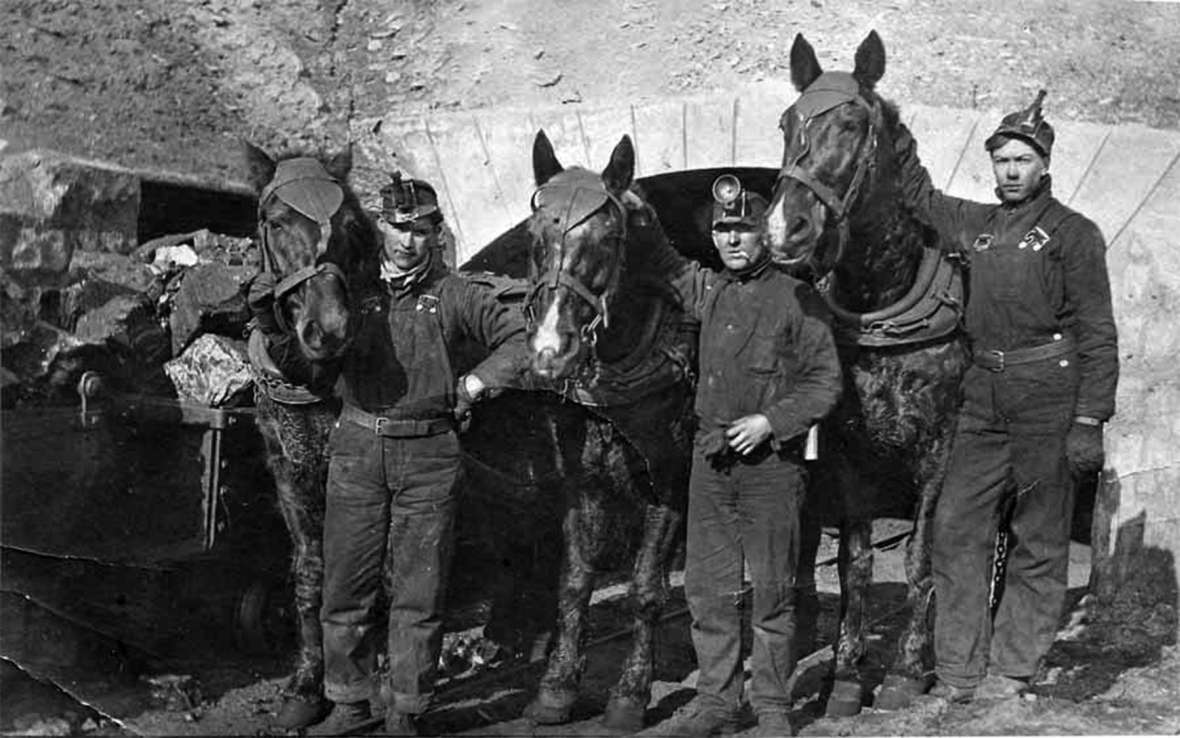
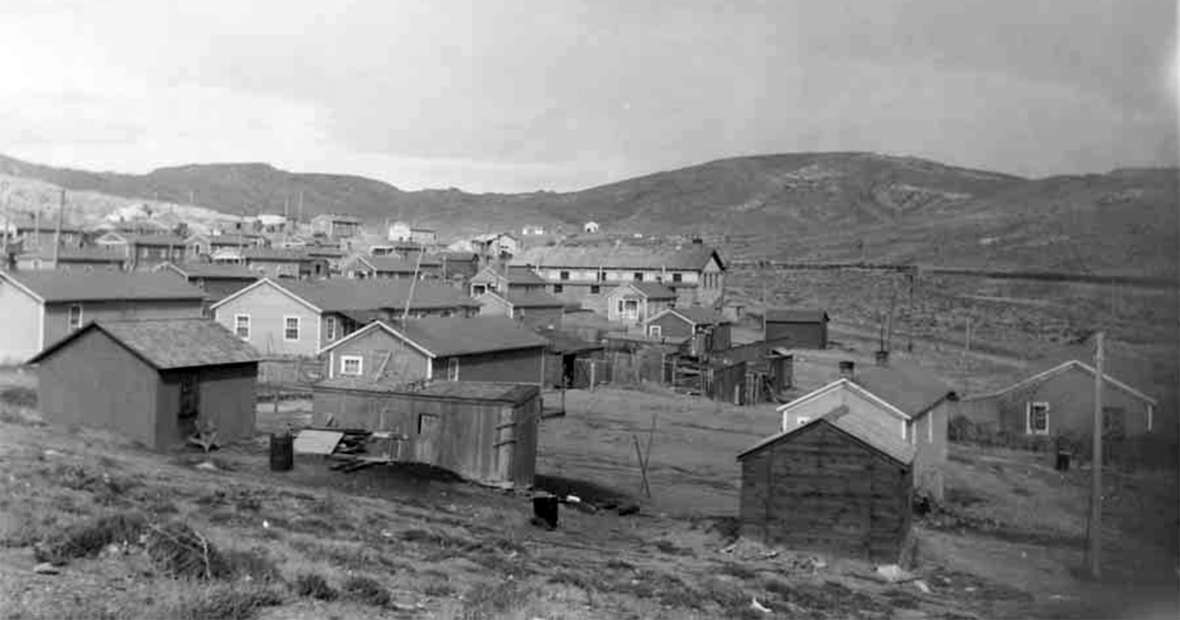
The Coal Camp Era
In 1899, the UP began a massive project to rebuild the entire line from Omaha to Ogden, straightening curves, boring tunnels and reducing grades to allow for longer, heavier trains, a lower cost per ton mile and more profit. Demand for coal rose sharply. Between 1898 and 1910, Wyoming coal production more than doubled, from more than three million tons to more than seven million tons per year.
Consequently, the Union Pacific began constructing spur lines north from the main line to new or newly acquired mine sites. In 1906, a spur up Horsethief Canyon east of Rock Springs to the mines at Superior was completed, and in 1907, work began on a line to a site called Gunn, three miles north of the tracks on the western edge of the North Baxter Basin: The era of the Sweetwater County coal camps had begun.
On March 20, 1910, miners began digging at a site seven miles north of Rock Springs. It was designated the Number One Mine, followed soon by numbers three and four, and the coal camp that sprang up near the mines was christened Reliance. Other camps followed over the years along the immense arc of the Rock Springs Coal Field, including Winton, Dines, Lionkol, East Plane and Stansbury.
The Reliance mines proved highly productive. In 1906, coal production in Sweetwater County was reported at 2.1 million tons, but by 1912, when the spur line to Reliance was completed, this figure had risen to 2.9 million tons, an increase of 38 percent. This created a demand for workers. One Union Pacific newspaper advertisement called for “1000 miners and laborers” for “mines at Rock Springs, Superior, and Reliance . . . the mines are safe and free [from] gas, work is steady, and wages are good.”
With the influx of workers came extraordinary ethnic and cultural diversity. Between 1880 and 1910, a full 66.1 percent of Sweetwater County’s railroad-and coal-town dwellers were foreign born. (Nearly 73 percent of its rural dwellers were native born.) More than 20 nationalities were represented, including English, Welsh, Irish, Scottish, Belgian, French, Canadian, German, Dutch, Hungarian, Austrian, Tyrolean, Italian, Polish, Croatian, Slovenian, Finnish, Serbian, Swedish, Danish, Basque, Greek, Chinese and Japanese.
By 1911, the State Mine Inspector reported that at Reliance “while the mines were being opened, the company carried on a house-building program. Seventy-five comfortable and commodious houses have been built and others are being added.”
Characterizing the houses as “comfortable and commodious” was probably an exaggeration. At first, water had to be hauled to the dwellings, where it was stored in barrels. Later, wells were drilled and water was piped in. Eventually, an enlarged power plant in Rock Springs brought electricity to Reliance. The population grew steadily, if not rapidly; according to census information, in 1930 there were 626 people in Reliance, and 740 in 1940.
The Union Pacific Coal Company Reliance headquarters building was roughly at the center of the camp. It housed the mine office, the company store and the post office. Reliance’s social center, a large building called The Bungalow, featured a large amusement hall, an activity room, the camp doctor’s office, a pool hall and a barber shop. Dances, concerts and other community events were staged there, and movies were shown; there was even roller skating.
Reliance served as an unofficial capital of the coal camps north of Rock Springs. While younger children attended grade schools at their own camps, all attended high school at the Reliance High School, completed in 1928. The first class graduated in 1931.
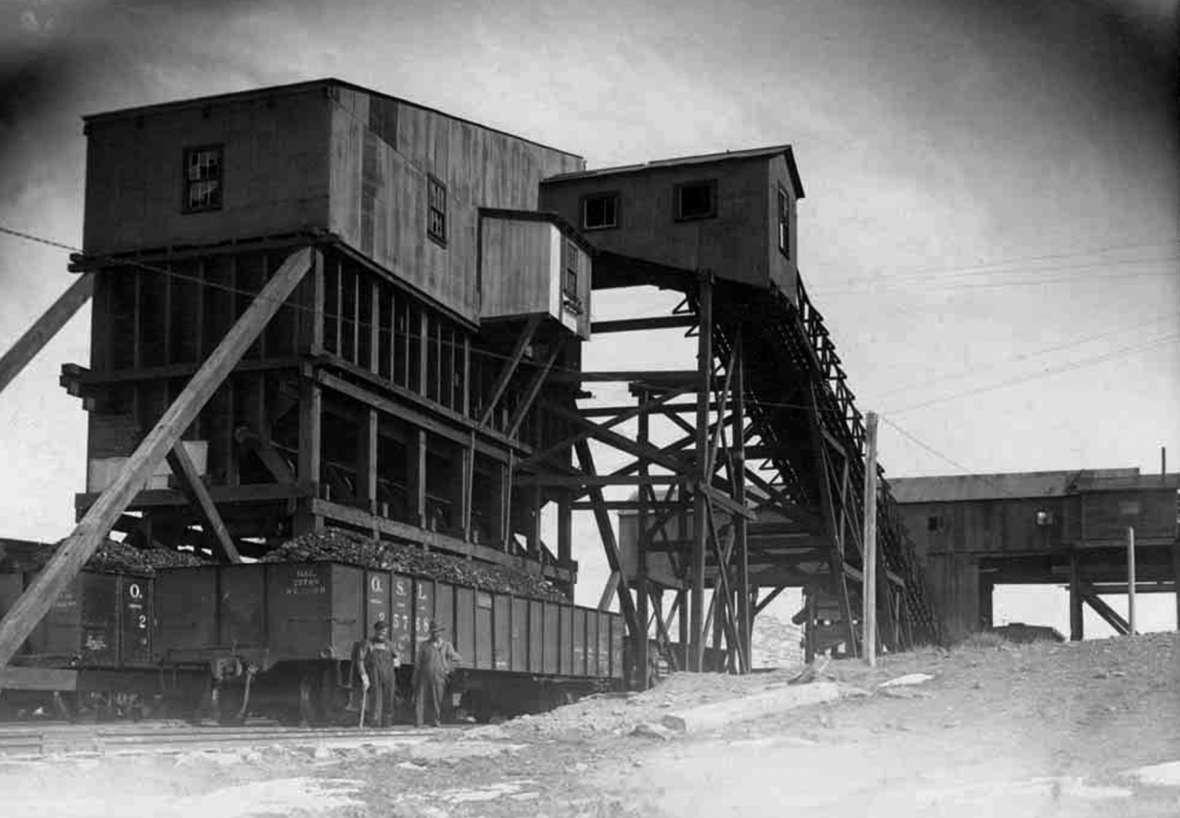
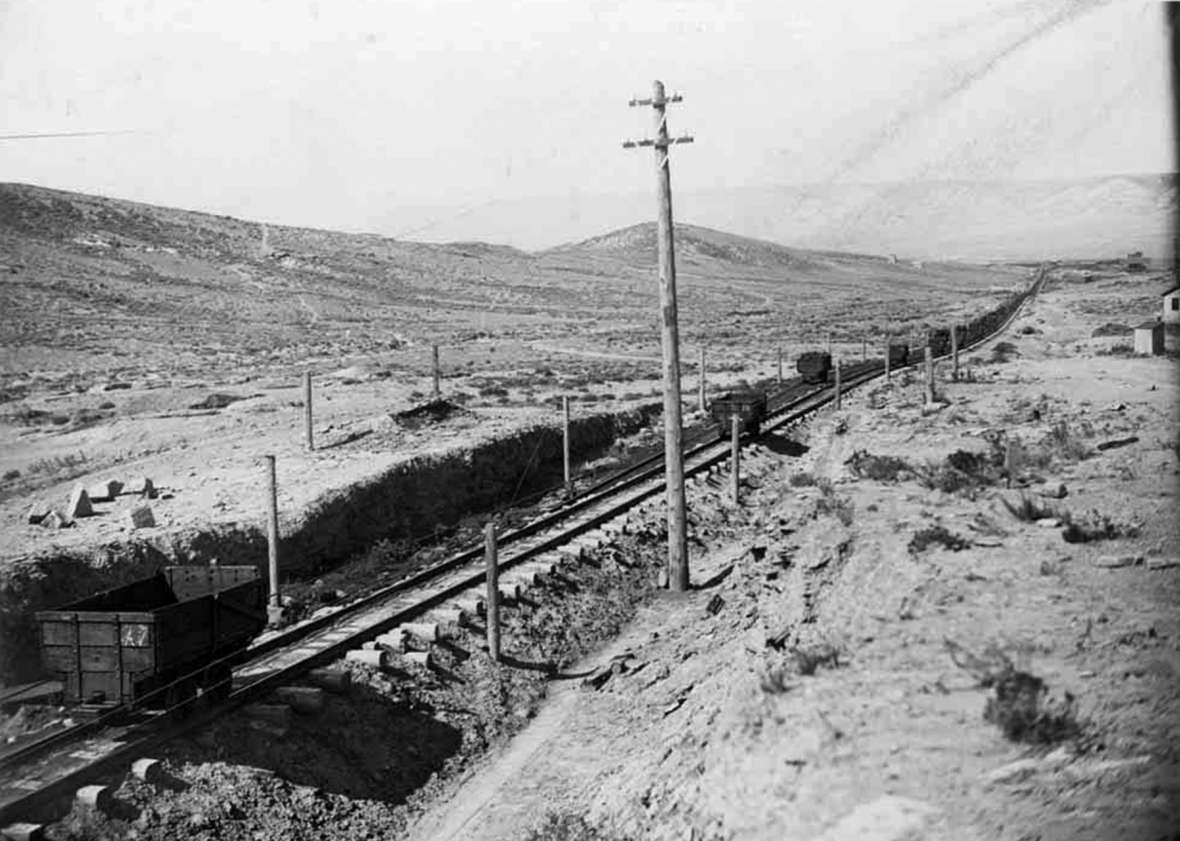
The Reliance Tipple
At coal-mining operations of the coal camp era in the west, coal-sorting stations called tipples were used to sort mined coal by size and also to remove debris; the sorted coal was then loaded on rail cars for shipment.
For decades a wooden tipple served the Reliance mines, but in 1936 a massive steel and concrete tipple replaced it. Twenty or more coal-hauling cars at a time with a capacity of four tons each traveled a special trolley line from the mines to the new tipple, powered by cables that ran overhead in the mine, and were strung on poles alongside the trolley track. At the tipple, the cars were tipped sideways with special machinery, dumping the coal into a hopper. The coal then moved to a shaker screen that sorted the coal into one of four categories of sizes: powder, nut, egg or lump. The tipple’s main conveyor, delivering the coal to railroad cars, was a 48-inch-wide rubber-covered belt traveling at 310 feet per second. The plant could process 500 tons of coal per hour.
As production increased from 1936 on, more workers were needed at the tipple. America’s entry into World War II in December 1941, however, caused a manpower shortage, with many men enlisting. Consequently, women worked at the tipple during the war years to “pick boney;” or waste material—mostly slate—that needed to be removed by hand from the coal.
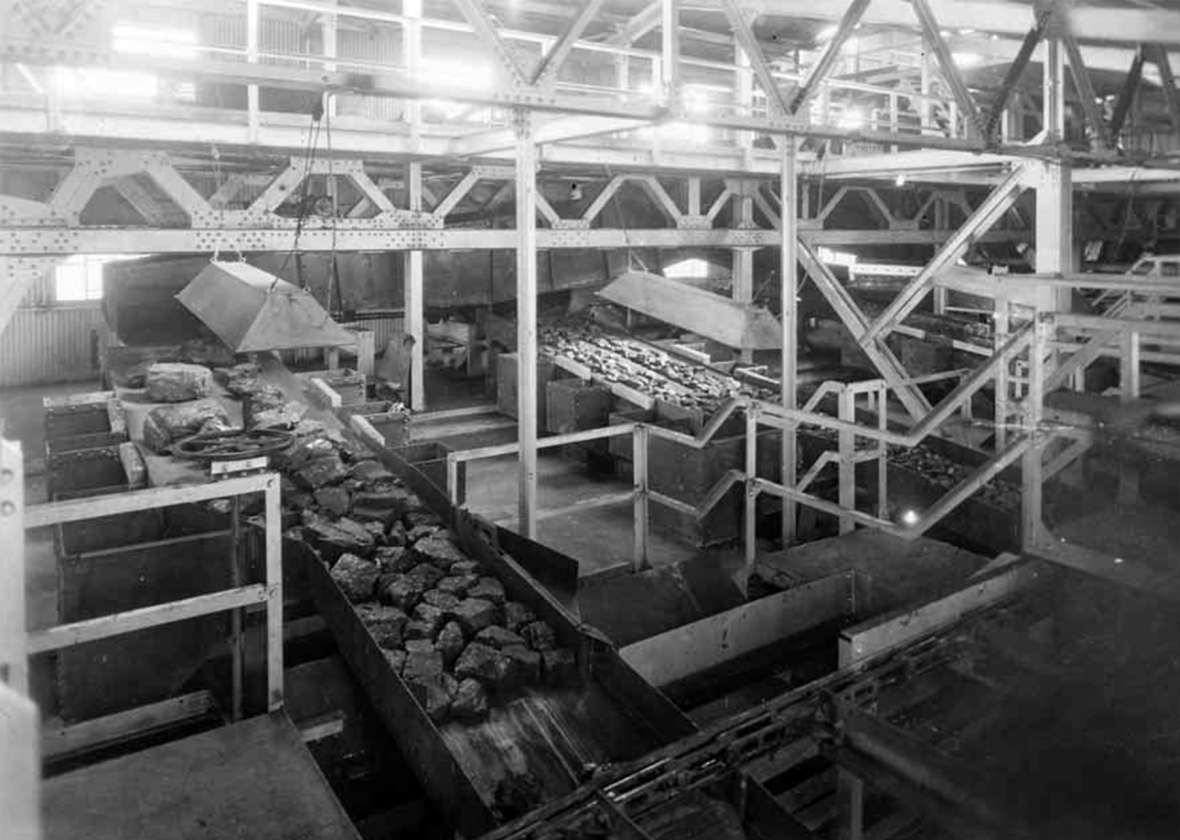
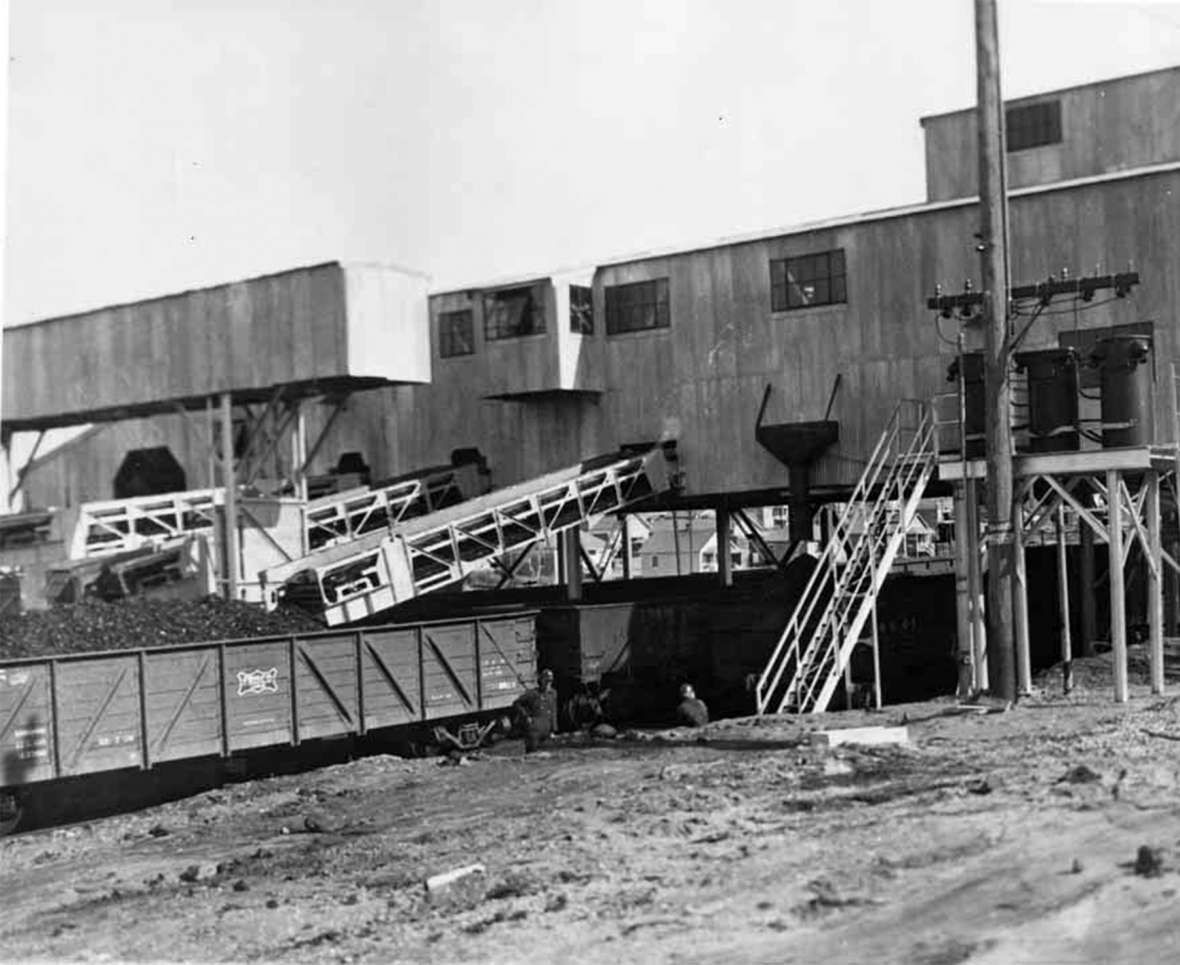
From Boom to Bust
At their peak during World War II, the Reliance mines produced 1.4 million tons of coal per year. But during the late 1940s and early 1950s, as the Union Pacific Railroad accelerated its changeover to diesel-electric locomotives, demand for coal declined. By the late 1950s, the transition was complete.
When the demand for coal ceased, the mines closed and the coal camps died. Winton, Stansbury, Gunn, Dines and Lionkol were abandoned and dismantled. To avoid paying taxes on the now-vacant miners’ houses, the coal companies sold them for a pittance and many were transported out whole to the towns of Rock Springs, Pinedale, Big Piney, Lander and Hudson, Wyo.; some even went out of state to Idaho, Utah and Colorado. All that remains of the camps today are foundations and a few crumbling walls.
Reliance was and remains the exception; that stubborn little town, population in the low hundreds, continues to hang on. It has a branch of the Sweetwater County Library, open four days a week. Reliance residents may have to drive to Rock Springs for groceries and gas, but they can get their dogs groomed at Cute & Curly on Main Street. The old high school still stands. By 1958 it was down to five seniors and closed in 1959, but from 1960 to 1961 served as the second campus of Western Wyoming Community College and first to offer daytime classes. The high school, one-time home of the Reliance Pirates, was placed on the National Register of Historic Places in 1989.
The Reliance Tipple remains, too. When the last of the Reliance mines shut down in 1954, the tipple was abandoned. Its powerful electric motors were salvaged and sold off, but the structure itself and its internal components, including shakers, hoppers and screens, were left intact. Some of the metalwork has fallen away and its glass windows are long broken out, but there it stands, only 100 yards from South Street, a hulking icon of an age gone by, and nearly a lone one: the only other surviving coal tipple from the Wyoming coal camp era is the wooden Aladdin Tipple in Crook County.
The Reliance Tipple is listed on the National Register of Historic Places and visitors are welcome, with a caveat: Stay out of the interior. The Sweetwater County Historical Museum in Green River confirms that the site is fenced, posted and under video surveillance. The interior is dangerous and off limits; people entering the tipple place themselves at risk.
There is, however, a safe way to explore the tipple’s interior, via two YouTube videos. Click here to see the first, and here to see the second.
Resources
Primary Sources
- Libby, James L. “Modern Steel Tipple at Reliance.” The Union Pacific Coal Company Employes’ Magazine, October 1936. Copy in the collections of the Sweetwater County Historical Museum.
- McAuliffe, Eugene. History of the Union Pacific Coal Mines, 1868-1940. Reprint. Omaha, Neb.: The Colonial Press, 1976.
- Swann, C.E. “The Geology of the Rock Springs Coal Field.” The Mining Congress Journal, February 1930. Copy in the collections of the Sweetwater County Historical Museum.
Secondary Sources
- Coal Tipple, Reliance, Wyoming. YouTube, accessed Dec. 26, 2019 at https://www.youtube.com/watch?v=0Q3yLiJ2WJM.
- Garceau-Hagen, Dee. The Important Things of Life: Women, Work, and Family in Sweetwater County, Wyoming, 1880-1929. Lincoln, Neb.: University of Nebraska Press, 1997.
- Gardner, Dudley A., and David E. Johnson. “Cultural Resource Inventory and Mitigation of Thirty-Seven Mine Reclamation Sites in Sweetwater County, Wyoming.” Archaeological Services, Western Wyoming Community College, Rock Springs, Wyo., May 1986. (Hereafter WWCC).
- Gardner, Dudley A. “Historic Inventory and Data Recovery Plan for the Reliance Tipple (48SW6461).” WWCC, October 1986.
- ________________. "National Register of Historic Places Registration Form: Reliance Tipple." National Park Service, 1991, accessed Dec. 30, 2019 at https://wyoshpo.wyo.gov/index.php/programs/national-register/wyoming-listings/view-full-list/830-reliance-tipple.
- McLean, Karen Spence, and Marjane Telck. Coal Camps of Sweetwater County. Charleston, S.C.: Arcadia Publishing, 2012.
- Roderick, Judy. “Coal history runs deep in our veins.” Rock Springs Rocket-Miner, Aug. 18, 2017.
- Reliance Tipple (Wyoming) laser scan flythrough. YouTube, accessed Dec. 26, 2018 at https://www.youtube.com/watch?v=rFuriKDeSoE&t=23s.
- Wolff, David A. Industrializing the Rockies: Growth, Competition, and Turmoil in the Coalfields of Colorado and Wyoming, 1868-1914. Boulder, Colo.: University Press of Colorado, 2003.
Illustrations
- Richard Collier’s 1986 photo of the exterior of the Reliance tipple is from the Wyoming State Historic Preservation Office. Used with thanks.
- The photos of the line of cars along the trolley line and of the car with “Reliance” painted on the side are Union Pacific Coal Company photos. These and the rest of the black and white photos are all from the collections of the Sweetwater County Historical Museum. Used with permission and thanks.
- The photo of the Reliance high school is from Wikipedia. Used with thanks.
